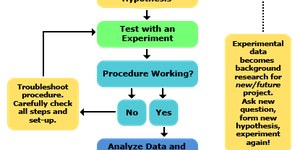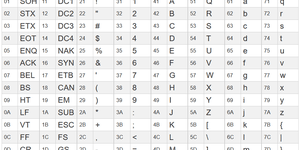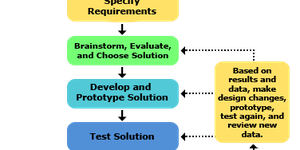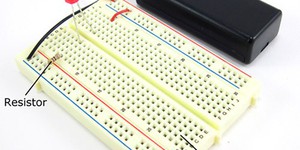Project Guides (147 results)
|
Select a resource
Sort by
|
Project Resource
What is the Scientific Method?
The scientific method is a process for experimentation that is used to explore observations and answer questions.
Do all scientists follow the scientific method exactly?
No. Some areas of science can be more easily tested than others.
For example, scientists studying how stars change as they age or how dinosaurs digested their food cannot fast-forward a star's life by a million years or run medical exams on feeding dinosaurs to test their hypotheses.…
Read more
Project Resource
7-bit ASCII Character Codes
The ASCII table contains letters, numbers, control characters, and other symbols. Each character is assigned a unique 7-bit code. ASCII is an acronym for American Standard Code for Information Interchange.
Decimal
Octal
Hex
Binary
Value
Description
…
Read more
Project Resource
What is the Engineering Design Process?
The engineering design process is a series of steps that engineers follow to come up with a solution to a problem.
Many times the solution to a problem involves designing a product (like a machine or computer code) that meets certain criteria and/or accomplishes a certain task. This process is different from the Steps of the Scientific Method, which you may be more familiar with. If your project involves making observations and doing…
Read more
Project Resource
Many electronics projects use something called a breadboard. What is a breadboard, and how do you use it? This tutorial video will give you a basic introduction to breadboards and explain how to use them in beginner electronics projects; you can also read more details and see more examples in the text sections.
More About Breadboards
Introduction
What is a breadboard?
Where does the name "breadboard" come from?
Are there different kinds of breadboards?
What is a "solderless"…
Read more
Project Resource
Materials and Construction Techniques
Use a self-standing display board like
these.
Display boards in black or white-colored "foam core" (a sandwich made up of two pieces of smooth surface paper with a polystyrene (plastic) middle) or corrugated cardboard are readily available at many retailers ranging between $4 to $14 per board depending on the material.
Print out or write your information on white paper that you will attach to your display board. Be sure to…
Read more
Project Resource
What is an acid or a base?
Whether a liquid is an acid or a base has to do with hydrogen ions (abbreviated with the chemical symbol H+). In water (H2O), a small number of the molecules dissociate (split up). Some of the water molecules lose a hydrogen and become hydroxide ions (OH−). The "lost" hydrogen ions join up with water molecules to form hydronium ions (H3O+). For simplicity, hydronium ions are referred to as hydrogen ions H+. In pure water, there are an equal number of hydrogen…
Read more
Project Resource
Calculator
Swipe left to see more
Enter your DNA sequence in the box:
Total count, all bases:
…
Read more
Project Resource
Bacteria grow tremendously fast when supplied with an abundance of nutrients. Different types of bacteria will produce different-looking colonies, some colonies may be colored, some colonies are circular in shape, and others are irregular. The characteristics of a colony (shape, size, pigmentation, etc.) are termed the colony morphology. Colony morphology is a way scientists can identify bacteria. In fact there is a book called Bergey's Manual of Determinative Bacteriology (commonly termed…
Read more
Project Resource
What is a Bibliography?
A bibliography is a listing of the books, magazines, and Internet sources that you use in designing, carrying out, and understanding your science fair project.
Your bibliography should include a minimum of three written sources of information about your topic from books, encyclopedias, and periodicals. You may have additional information from the Web if appropriate.
But, you develop a bibliography only after first preparing a background research plan — a road…
Read more
Project Resource
Learn the basic functions of a multimeter and how to measure voltage, resistance, and current with digital multimeters.
Read more
|












